Letters from our forebears give us today a rich picture of them, their personalities and their lives. As it’s my maternal grandmother’s birthday tomorrow (March 16), I am sharing the first part of a circular letter written by Elsa of the family’s relocation from the Murray Riverland to the desert Centre of Australia back in October 1939. My grandpa, Sam, Elsa’s husband had been called to be a missionary pastor in Hermannsburg, Northern Territory. Note the timing of this adventure. World War Two had just broken out, but no mention in this letter.
CIRCULAR WRITTEN by ELSA GROSS from HERMANNSBURG,
OCTOBER 1939
Hermannsburg
via Alice Springs
October 1939
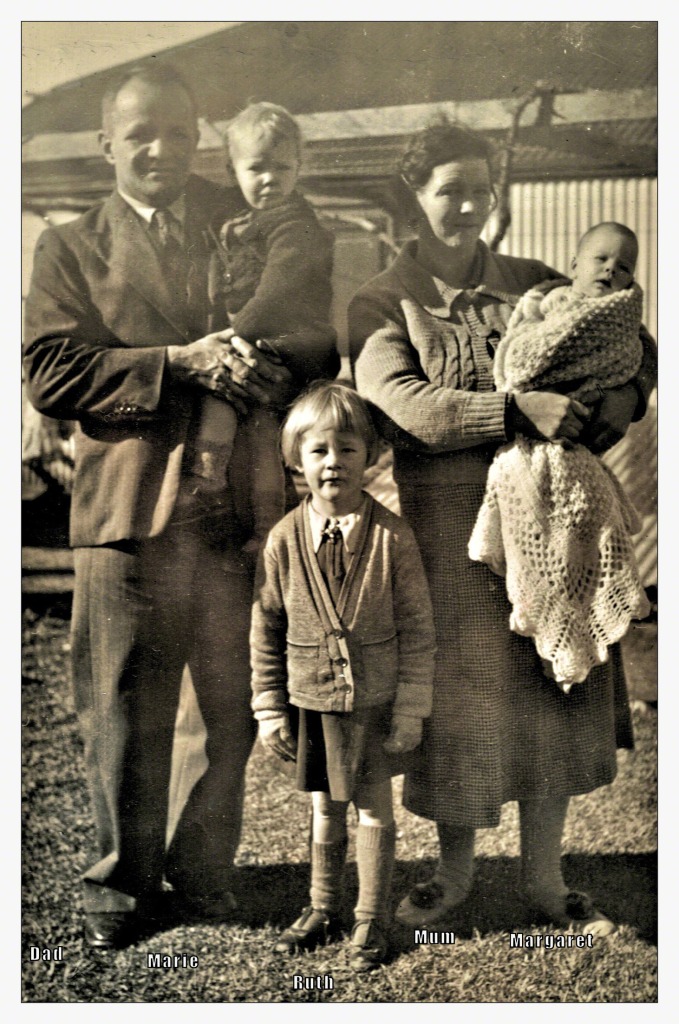
Dear Friends,
Well, here we are at Hermannsburg at last, our long journey is at an end. We have a home again, although till now our goods haven’t arrived – we are anxiously waiting for them to be able to pack away our things – but – this is the land of ‘wait-a-while’ – so we will just have to wait until they come.

We had a very pleasant journey up from Adelaide. Went as far as Port Augusta in my father’s car, after having stayed overnight at a cousin’s place in Murraytown. It was very nice going up by car, it saved changing twice and with all our luggage it would have been quite a picnic. We had arranged to meet Karl in Port Augusta, but when we arrived there we discovered he had German Measles, so we could only speak to him from the other side of the room; he was in bed, and he couldn’t even come to see us off, which was quite disappointing.

Anyhow, at 4.30am on Thursday 28th we steamed out of the Port Augusta station. We had sleeping berths, the children and I with 2 other ladies in the one compartment, 4 berths in each, and Sam & 3 other men in the next compartment. During the day we were mostly alone in Sam’s compartment, the other men went on the other part of the train and just came back to sleep. It was very nice because then the children had room to romp around a bit. The sleeping berths were very comfortable, 2 at the top and 2 at the bottom. We all had bottom ones, Ruth & Marie in one, I in the other one and Margaret between in her basket. During the day the beds are just ordinary seats and for the night they put the back-leans down and it makes a comfortable bed. The children stood the travelling very well, they were very excited of course to go in the train. The end of the second day (Friday) they got a bit tired of it, but soon got over that. The only one who didn’t enjoy it too much was Margaret, she was running a temperature most of the time and was particularly grizzly on Saturday afternoon. The next morning we could see why – she had German Measles, but the rash didn’t last long, and now she is just about right again. Now we are wondering if Ruth and Marie will get it, they have colds, so we are keeping ourselves isolated out here, we don’t want to give it to the natives, they always get things so much worse than the whites. One of the ladies in our compartment had them too, she was very miserable, was in bed for most of the trip.
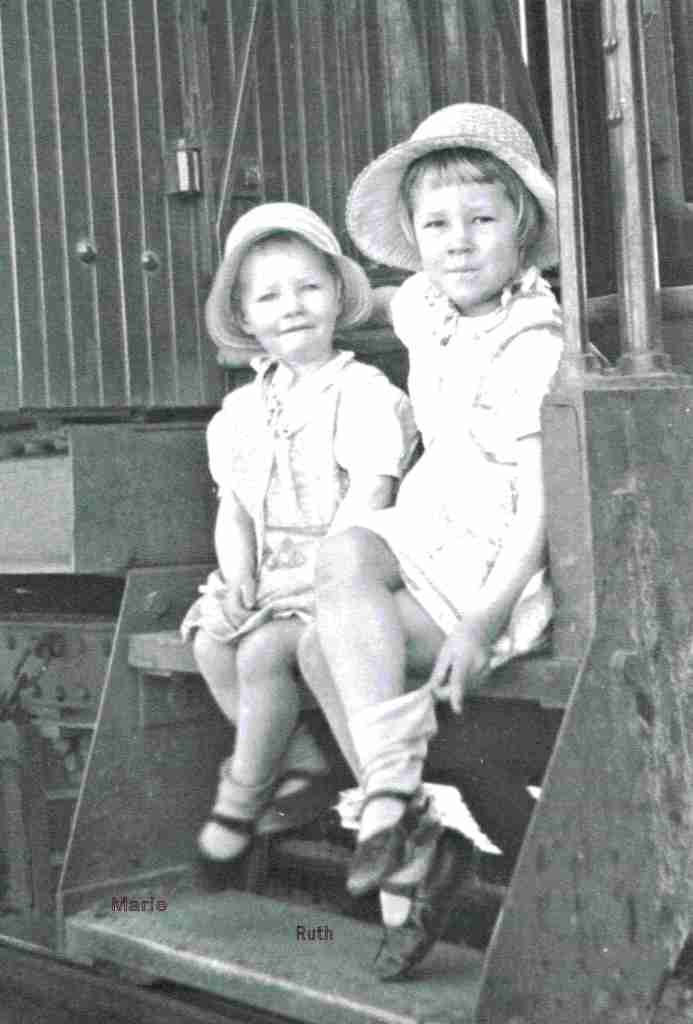
Well, to go on with our trip. From Port Augusta to Oodnadatta, which we reached at 9 o’clock on Friday night, there wasn’t much to see, flat deserty-looking country, a lot of it covered with stones, not nice smooth ones, were like broken bits, it makes a person wonder where they all came from — no hills, just these plains covered with stones. We also passed a lake, but that looked as dreary and dead-looking as all the rest of the country. That was to Oodnadatta, when it was night. But when we woke the next morning it was different, grass and trees and ranges and wild flowers. One advantage about this trip is, that they stop at every station or siding, sometimes there are just one or 2 houses, other places a few more. One place we stopped at, Anna Creek, by name, the 2 or 3 railway houses had lovely gardens and lawns, such a contrast to all the surrounding country. We saw something similar at Rumbalara , where the police station is. At this place we had to wait for nearly 2 hours as our engine had broken something and they had to steam up another one. This long stay enabled us to see some of the wild flowers growing along the line. They are altogether different to the ones in the south, and such a variety, too, and they appeared to be past their best too. It must be a wonderful sight when they are all out. This delay at Rumbalara made us late, of course, at Alice Springs. We arrived there at quarter to 5 instead of 2.15. Missionary Albrecht arrived to meet us a few minutes after the train was in, and took us and our host of luggage to Johannsens, where we slept.
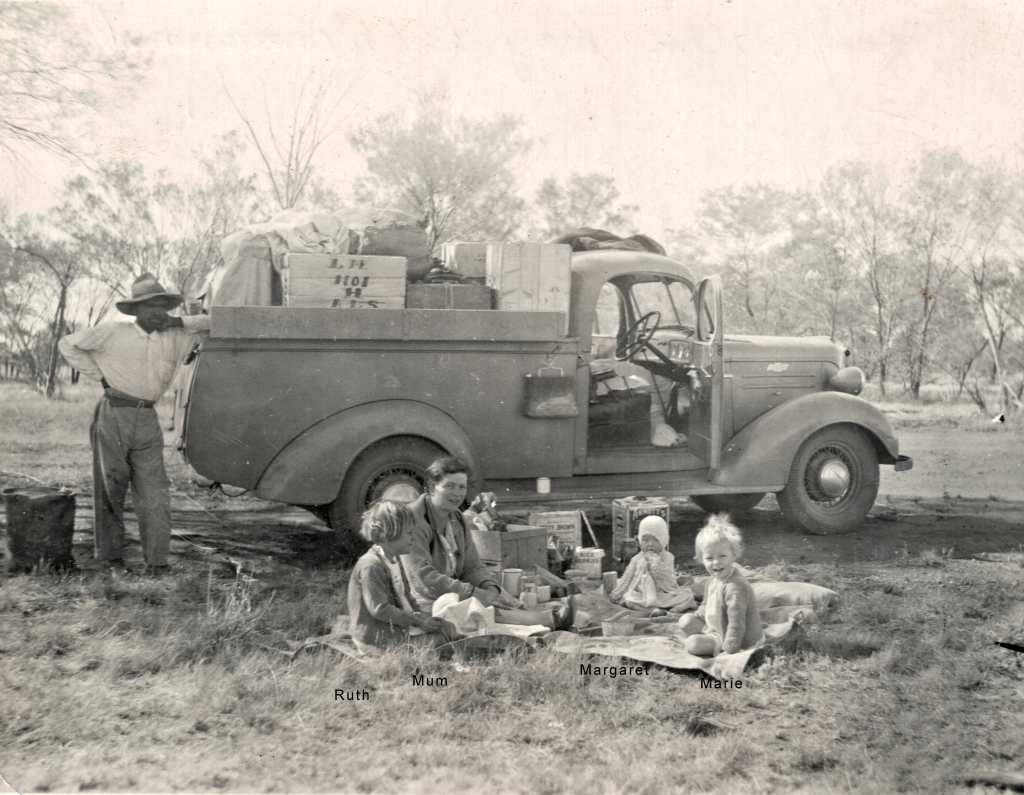
After we had had tea Missionary Albrecht took us out to the little church which they have in Alice Springs. It was presented by Mr Materne of Nuriootpa as a Thank offering. It is a nice little church with a fairly large vestry and a sleep-out, so that anyone coming in from the mission station has somewhere to stay. At the church we met some of the natives of Alice Springs, they are being cared for by the evangelist Martin, who holds services twice every Sunday, when there is no missionary there and also gives baptismal instruction. He is a very fine man. Here the children met the first natives. They had seen some from the train already and were greatly excited. To our amazement they weren’t at all afraid of them, and not any more shy, if as shy, as with white children. They shook hands with them much to the natives delight.
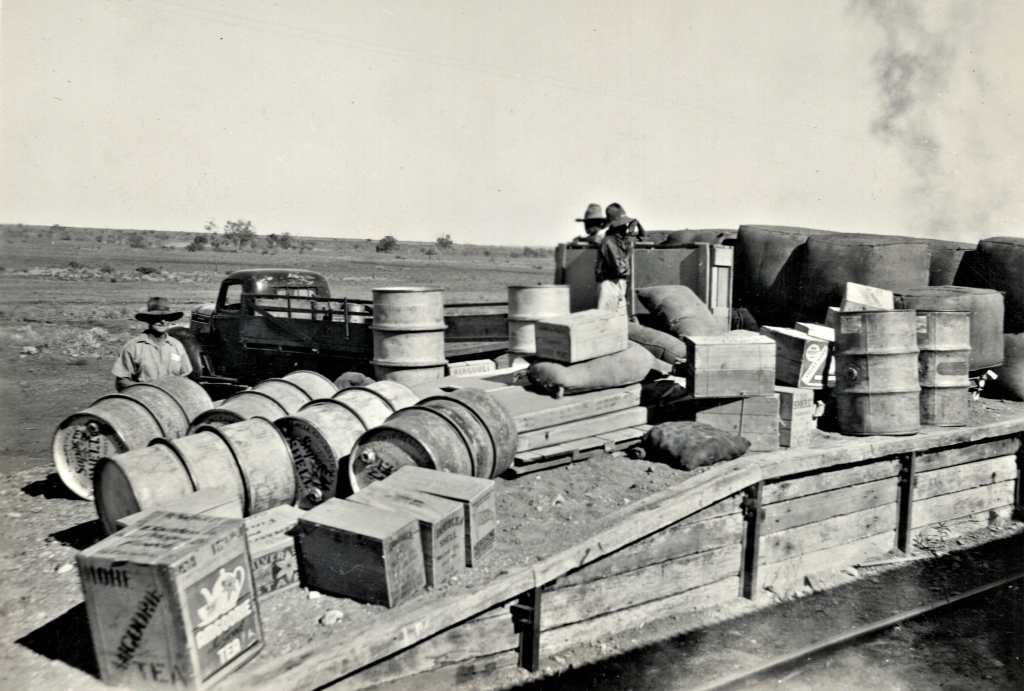
The next day services were held there, in the morning it was in Arunda, but during the service Missionary Albrecht welcomed Sam and he then spoke a few words to them in English. In the afternoon Sam conducted the service and preached the sermon, in English of course. There were about 60 natives there for the services, not as many as usual so they said, some were away working. Several whites came to the afternoon service, Johannsens and others. Unfortunately I wasn’t able to go as Margaret was sick, I was so sorry I had to miss it.

On Monday Sam and Missionary Albrecht had quite a lot of business to see to, and then on Tuesday morning we set off for Hermannsburg at about 11 o’clock, Sam and Marie on the back of the loaded truck with a native man, and Missionary Albrecht and Ruth, Margaret and I in the front seat. It was a fairly hot day but not unpleasant. We called in at “The Jay”, 25 miles from “The Alice”, the home of Mr & Mrs T. Strehlow. They persuaded us to stay there for dinner. They have a nice little home, 3 rooms, with a lovely wide verandah, made of cement bricks. They also have a refrigerator. It was just lovely to have the nice cool water and also ice cream, a real luxury way out in the bush. At about 3 o’clock we went on. It wasn’t quite so hot then. Up to the Jay the road had been fair, it had been made some time ago for the Governor General. After we left the Jay it wasn’t quite so good, it had been washed out by the heavy rains and that meant driving fairly slowly with the loaded truck. We had to cross over so many creeks and of course there were no bridges, but stones and sand instead. The truck had to pull and pant and bump to get across in some places. The scenery was quite nice though. Before we came to the Jay we were travelling right in the ranges, but after passing there the country was more open, a plain, with ranges along both sides. But there is nothing like a desert around here. It is more like one of the back roads in the mallee, only of course more creek beds to cross.

I quite forgot to mention that after we left the Jay we drove around the native camp, where blind Moses is the evangelist. These natives live in grass huts. They were very pleased see us and of course we had to shake hands all around. Then they sang a hymn, after which Missionary Albrecht offered up a prayer and they all then recited the Lord’s Prayer, all in Arunta of course. It was wonderful to think that out there in the bush, underneath the gum trees, those natives praying and singing praises to their Saviour just as the white people do in their Churches. The natives were very interested in our children, and of course our children were very interested in them too. Before we left Missionary Albrecht had to take orders for the different ones, they had a few pennies to spend, one wanted a hair clasp, another some lollies and so on. Next time somebody from here goes to Alice Springs the things have to be taken to them from the store here.
[…to be continued]
© Elsa Gross 1939
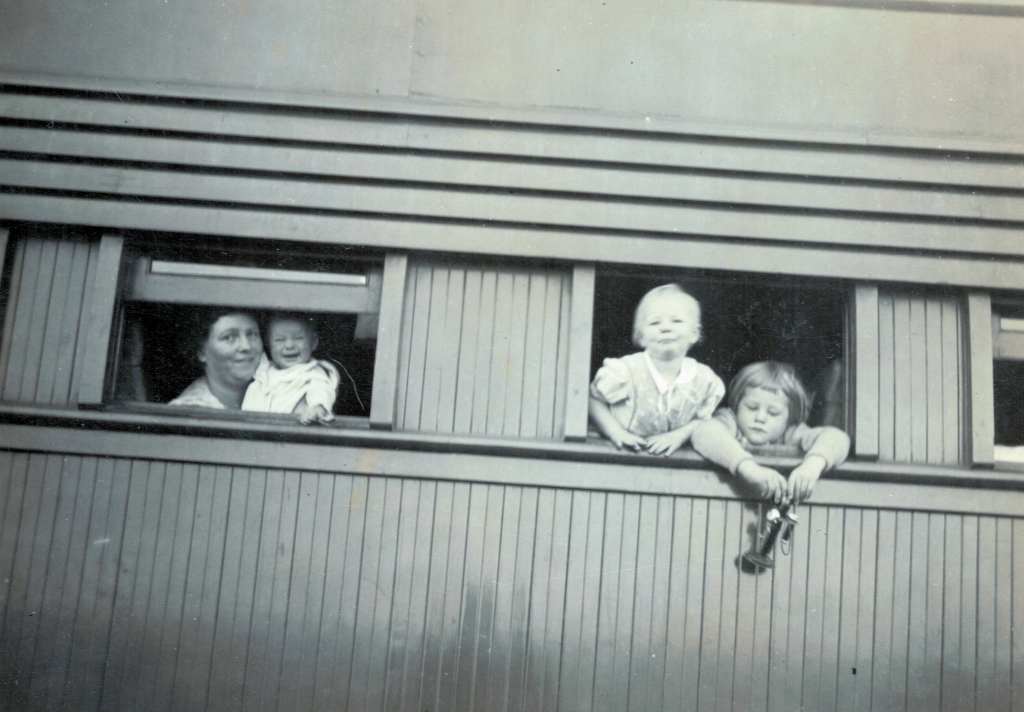
Feature Photo: The Gross Girls on the Ghan © S.O. Gross 1939
***
Virtual Travel Opportunity
For the price of a cup of coffee (takeaway, these days),
Click on the link and download your kindle copy of one of my travel memoirs,
Experience Historic Australian outback adventure with Mr. B
in
The T-Team with Mr. B: Central Australian Safari 1977

Or come on a trek with the T-Team in
Trekking with the T-Team: Central Australian Safari 1981.
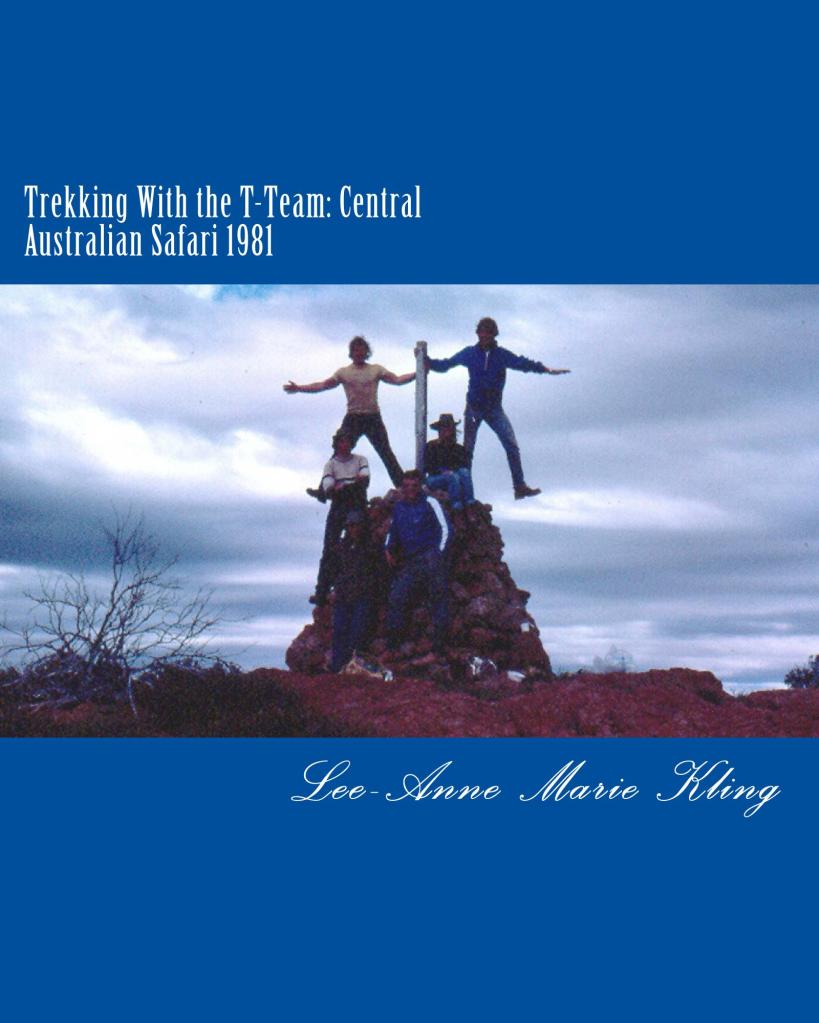
Pingback: Serial Saturday–Diamonds in the Cave (32) | leeannemarieblog